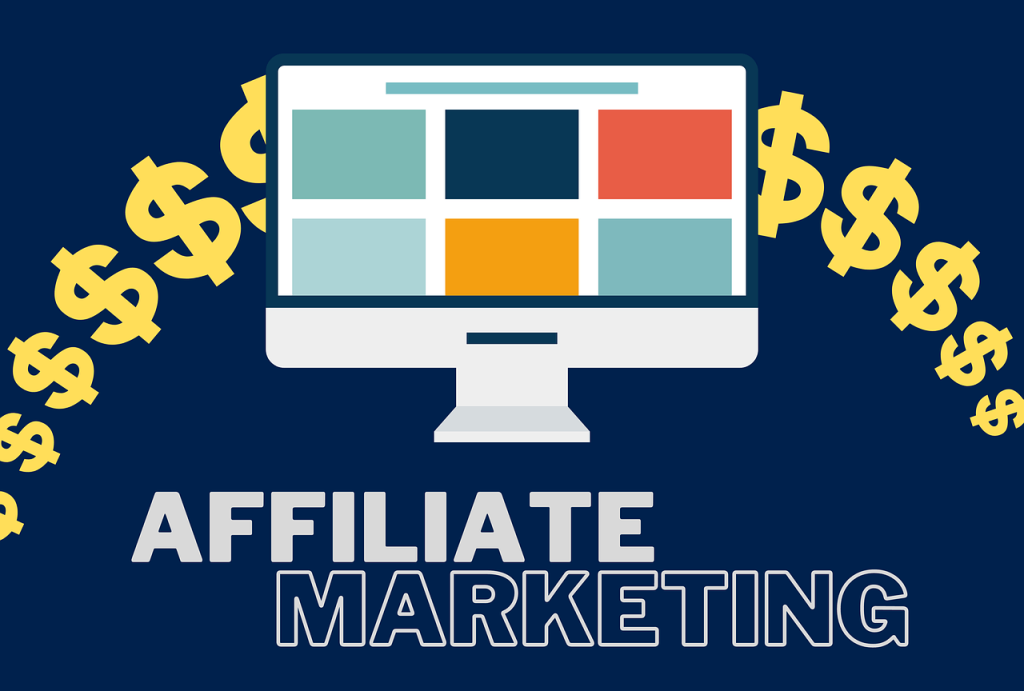What Is The Difference Between Pay-per-sale And Pay-per-click Affiliate Programs?
Ever wondered about the subtle nuances that set pay-per-sale and pay-per-click affiliate programs apart? Want to understand the factors that make them unique? Well, look no further! In this article, I will break down the key distinctions between these two popular affiliate marketing models. So, whether you’re an aspiring affiliate marketer or simply curious about the inner workings of the industry, this is your chance to gain some valuable insights. Prepare to unravel the mystery and gain a deeper understanding of pay-per-sale and pay-per-click affiliate programs.

This image is property of pixabay.com.
Definition of Pay-per-sale Affiliate Programs
Pay-per-sale affiliate programs are a type of online marketing strategy where affiliate marketers earn commission based on the number of sales they generate for a merchant. This means that the affiliate marketer is only paid when a sale is made through their referral.
Explanation of Pay-per-sale
In a pay-per-sale affiliate program, the affiliate marketer promotes the merchant’s products or services using various marketing techniques. They provide a unique affiliate link to track sales generated through their efforts. When a customer clicks on the affiliate link and makes a purchase, the affiliate marketer receives a commission based on the agreed percentage or fixed amount set by the merchant.
How it Works
When an affiliate marketer joins a pay-per-sale affiliate program, they are provided with a unique affiliate ID or tracking link. This link allows the merchant to track the sales generated by the affiliate marketer. The affiliate marketer includes this link in their promotional materials, such as blog posts, social media posts, or email campaigns.
When a potential customer clicks on the affiliate link and makes a purchase, the sale is attributed to the affiliate marketer. The merchant then pays the affiliate marketer a commission based on the agreed-upon terms. This can be a percentage of the sale amount or a fixed amount per sale.
Benefits
One of the main benefits of pay-per-sale affiliate programs is the potential for high earnings. As the affiliate marketer only receives commission when a sale is made, there is a direct correlation between their efforts and the amount of money they can earn. This can be especially beneficial for affiliate marketers who are skilled at driving sales and have a targeted audience interested in the merchant’s products.
Additionally, pay-per-sale affiliate programs often offer higher commission rates compared to pay-per-click programs. This means that even if an affiliate marketer generates fewer clicks, they can still earn a significant income if those clicks lead to a sale.
Limitations
One limitation of pay-per-sale affiliate programs is that it may take some time and effort to generate a significant number of sales. Unlike pay-per-click programs where affiliate marketers earn commission based on clicks, pay-per-sale programs require actual conversions to earn money. This means that affiliate marketers need to attract potential customers who are willing to make a purchase, which can be more challenging than simply getting clicks.
Another limitation is that pay-per-sale programs may not be suitable for all industries. Some products or services may have a longer sales cycle or higher price points, making it harder to convert potential customers into buyers. Affiliate marketers need to consider the nature of the product or service they are promoting and whether it is a good fit for a pay-per-sale affiliate program.
Definition of Pay-per-click Affiliate Programs
Pay-per-click affiliate programs are a form of online advertising where affiliate marketers earn commission based on the number of clicks their referral links receive. In this type of program, the affiliate marketer is paid for the traffic they drive to the merchant’s website, regardless of whether a purchase is made.
Explanation of Pay-per-click
In pay-per-click affiliate programs, the affiliate marketer promotes the merchant’s products or services by placing ads with their referral link on various platforms such as search engines, social media, or websites. They earn commission based on the number of clicks their ads receive, regardless of whether those clicks result in a sale.
How it Works
When an affiliate marketer joins a pay-per-click affiliate program, they create ads using their unique affiliate ID or tracking link. These ads direct users to the merchant’s website when clicked. The merchant pays the affiliate marketer a predetermined amount each time a user clicks on the ad, regardless of whether a sale is made.
Benefits
One of the main benefits of pay-per-click affiliate programs is that affiliates can start earning money quickly. Since they are paid based on the number of clicks their ads receive, they don’t need to wait for a sale to be made to earn a commission. This makes pay-per-click programs attractive for beginners in affiliate marketing or those who want to generate income while building their sales funnel.
Additionally, pay-per-click programs offer affiliate marketers the opportunity to reach a wide audience. With platforms like search engines and social media, affiliates can target their ads to specific demographics and interests, increasing the chances of getting clicks on their referral links.
Limitations
A limitation of pay-per-click programs is that the affiliate marketer’s earnings depend on the quality of the traffic they drive to the merchant’s website. While they may generate a high number of clicks, not all of those clicks will result in sales. This means that affiliate marketers need to focus on attracting relevant and engaged visitors who are more likely to convert into customers.
Another limitation is the potential for click fraud. Click fraud occurs when someone purposely clicks on an affiliate marketer’s ads with no intention of making a purchase. This can lead to inflated advertising costs and lower earnings for affiliate marketers.

This image is property of pixabay.com.
Discover How to Make Money with the Number #1 Side Hustle
Comparison between Pay-per-sale and Pay-per-click Affiliate Programs
When choosing between pay-per-sale and pay-per-click affiliate programs, there are several factors to consider. Let’s compare these two types of programs based on revenue model, risk, control over ads, conversion rate, and suitability for different industries.
Revenue Model
In pay-per-sale affiliate programs, affiliate marketers earn a commission when a sale is made. The commission can be a percentage of the sale amount or a fixed amount per sale. On the other hand, pay-per-click programs pay affiliates based on the number of clicks their ads receive, regardless of whether a sale is made.
The revenue model of pay-per-sale programs allows for potentially higher earnings per sale, whereas pay-per-click programs offer a steady income stream based on the number of clicks.
Risk
Pay-per-sale affiliate programs typically carry more risk for the affiliate marketer. Since they only earn a commission when a sale is made, there is a chance that they may put in significant effort but not generate any sales. This risk is mitigated in pay-per-click programs, where affiliates earn money for every click, regardless of the outcome.
Control over Ads
Pay-per-sale programs often provide more control over ad placements for affiliate marketers. They can choose where and how they promote the merchant’s products, giving them the opportunity to align their ads with the audience’s interests. In contrast, pay-per-click programs rely on ad platforms to display the ads, limiting the affiliate marketer’s control over ad placements.
Conversion Rate
The conversion rate is an essential factor in affiliate marketing success. Pay-per-sale programs generally have a higher conversion rate since the affiliate marketer is targeting potential customers who are more likely to make a purchase. Pay-per-click programs, on the other hand, may have a lower conversion rate as the goal is to drive clicks rather than sales.
Suitability for Different Industries
Pay-per-sale programs are well-suited for industries with higher-priced products or services or those with longer sales cycles. This is because they allow affiliate marketers to earn a higher commission per sale. Pay-per-click programs, on the other hand, can be suitable for industries with lower-priced products or services where generating a high volume of clicks is more important than individual sales.
When to Choose Pay-per-sale Affiliate Programs
Target Audience
Pay-per-sale affiliate programs are ideal when targeting a niche audience who are more likely to convert into customers. If the products or services being promoted have a specific target market that can be reached effectively, a pay-per-sale program can be a suitable choice.
High-quality Content
Affiliate marketers who can create high-quality content that educates and persuades potential customers to make a purchase are more likely to succeed in pay-per-sale programs. By providing valuable information and showcasing the benefits of the products or services, they can increase the chances of conversions.
Niche Markets
Pay-per-sale programs can be particularly profitable in niche markets where there is less competition. By targeting a specialized audience, affiliate marketers can position themselves as experts in their field and attract highly motivated customers who are willing to make a purchase.

This image is property of pixabay.com.
When to Choose Pay-per-click Affiliate Programs
Wide Audience Reach
Pay-per-click affiliate programs are suitable for affiliate marketers who want to reach a wide audience. Platforms like search engines and social media provide opportunities to target specific demographics and interests, allowing affiliates to drive a large number of clicks to their ads.
Higher Click-through Rates
If a particular product or service has a high click-through rate (CTR) potential, a pay-per-click program may be the right choice. Affiliates can optimize their ad campaigns to maximize clicks by targeting relevant keywords and creating compelling ad copy.
Low Conversion Barriers
Pay-per-click programs can be advantageous when promoting products or services with low barriers to entry. If potential customers do not have to go through a lengthy decision-making process or commit to a significant financial investment, they may be more likely to click on ads and explore the merchant’s offerings.
Factors to Consider when Choosing Between Pay-per-sale and Pay-per-click Affiliate Programs
Product Type
The nature of the product or service being promoted plays a significant role in choosing the right affiliate program. Higher-priced products or those with longer sales cycles may be better suited for pay-per-sale programs, while lower-priced products or services with broader appeal may perform well in pay-per-click programs.
Business Goals
Affiliate marketers need to consider their business goals when deciding between pay-per-sale and pay-per-click programs. If the goal is to maximize revenue per sale, a pay-per-sale program may be the better choice. Conversely, if the objective is to reach a wide audience and generate a high volume of clicks, a pay-per-click program may be more suitable.
Marketing Budget
The marketing budget available can also influence the choice between pay-per-sale and pay-per-click programs. Pay-per-click programs often require an upfront investment to drive traffic to the affiliate marketer’s ads. On the other hand, pay-per-sale programs may not require as much upfront investment since affiliates only earn a commission when a sale is made.
Competition
The level of competition in a particular industry or niche can also impact the choice of affiliate program. Highly competitive markets may make it more difficult for affiliate marketers to generate sales and earn high commissions in pay-per-sale programs. In such cases, pay-per-click programs may offer a more viable option to attract potential customers and earn a steady income.
Success Factors for Pay-per-sale Affiliate Programs
Relevant Target Audience
To succeed in pay-per-sale affiliate programs, it is crucial to target a relevant audience interested in the merchant’s products or services. By understanding the needs and preferences of the target audience, affiliate marketers can tailor their promotions and increase the likelihood of conversions.
Compelling Promotions
Affiliate marketers should create compelling promotions that highlight the benefits of the products or services being promoted. By offering unique selling points, discounts, or incentives, they can entice potential customers to make a purchase through their referral link.
Trust and Credibility
Building trust and credibility is essential for pay-per-sale affiliate programs. Affiliate marketers should establish themselves as experts or authoritative figures in their niche to gain the trust of their audience. This can be done through the creation of high-quality content, customer testimonials, and endorsements.
Success Factors for Pay-per-click Affiliate Programs
Effective Ad Campaigns
To succeed in pay-per-click programs, affiliate marketers need to create effective ad campaigns. This includes choosing the right keywords, crafting captivating ad copy, and optimizing landing pages. Continuous testing and optimization are necessary to maximize click-through rates and conversions.
Keyword Research
Keyword research is a critical component of pay-per-click affiliate marketing. By identifying relevant and high-performing keywords, affiliate marketers can target the right audience and increase the chances of getting clicks on their ads. Comprehensive keyword research tools and competitor analysis can aid in this process.
Landing Page Optimization
The landing page is where potential customers are directed after clicking on an affiliate marketer’s ad. Optimizing the landing page for conversions is essential to minimize bounce rates and increase the likelihood of sales. Clear calls-to-action, persuasive copywriting, and an intuitive user experience are crucial elements of an effective landing page.
Conclusion
Understanding the differences between pay-per-sale and pay-per-click affiliate programs is crucial for affiliate marketers looking to maximize their earning potential. The choice between these two programs depends on factors such as revenue model, risk tolerance, control over ads, conversion rates, and suitability for different industries.
When deciding between pay-per-sale and pay-per-click programs, it is important to consider the target audience, the quality of content, and the competitiveness of the industry. Factors such as wide audience reach, higher click-through rates, and low conversion barriers should also be taken into account.
Success in pay-per-sale programs is dependent on targeting a relevant audience, creating compelling promotions, and establishing trust and credibility. Effective ad campaigns, thorough keyword research, and landing page optimization are essential for success in pay-per-click programs.
By understanding the differences and choosing the right program based on individual circumstances and goals, affiliate marketers can maximize their affiliate marketing potential and achieve success in the ever-growing world of online marketing.
Become an Affiliate Marketer in 5 Easy Steps